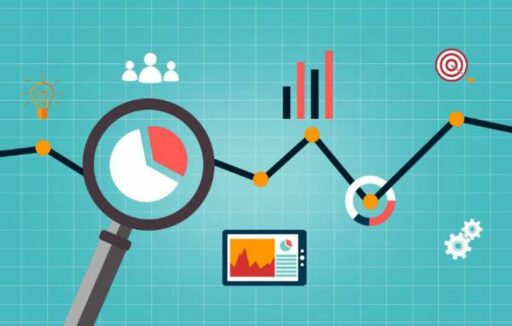Table of Contents
In the age of data-driven decision-making, Customer Data Platforms (CDPs) have become an essential tool for businesses aiming to understand and engage their customers more effectively. By integrating data from multiple sources to create a unified customer profile, CDPs enable companies to deliver personalized experiences and drive growth. This article delves into the rise of CDPs and explores how they are unlocking customer insights, enhancing customer experience, and contributing to the bottom line.
Key Takeaways
- CDPs consolidate information from various tools to create a centralized customer database, enabling personalized marketing campaigns and a comprehensive view of customer interactions.
- Adopting CDPs can help businesses overcome the challenge of data silos and fragmentation, leading to a more holistic 360-degree view of customers.
- Organizations that implement CDPs can experience significant financial benefits, with the potential to monetize data and increase revenue through targeted customer engagement.
- Assessing organizational readiness and fostering cross-functional collaboration are critical steps in successfully adopting and leveraging CDPs for business growth.
- The integration of AI with CDPs presents transformative opportunities for businesses to gain advanced customer insights and personalize the customer experience at scale.
Exploring the Fundamentals of Customer Data Platforms

Defining Customer Data Platforms and Their Importance
At the heart of modern marketing strategies lies the Customer Data Platform (CDP), a system designed to consolidate and integrate customer information from various sources into a single, comprehensive database. This unified customer view is crucial for businesses aiming to deliver personalized experiences and make data-driven decisions.
- Unified Customer View: By amalgamating data from multiple touchpoints, CDPs provide a holistic view of the customer journey.
- Enhanced Personalization: Leveraging the detailed profiles created by CDPs, marketers can tailor their campaigns to meet individual customer needs.
- Data Compliance and Governance: With centralized data management, CDPs simplify the adherence to data privacy regulations.
The versatility of CDPs allows for nuanced segmentation and targeted marketing initiatives, which are essential in today’s competitive landscape.
The transition from traditional data management platforms to CDPs represents a significant shift towards more effective and efficient customer engagement. By embracing CDPs, companies can resolve customer data debt and harness the full potential of their marketing efforts.
The Evolution from Data Management to Customer Data Platforms
The journey from traditional data management platforms to Customer Data Platforms (CDPs) represents a pivotal shift in the business landscape. CDPs have emerged as a vital tool for organizations aiming to harness the full potential of their customer data. Unlike their predecessors, CDPs integrate data from multiple sources, creating a single customer view that is both accessible and actionable.
- Traditional Data Management Platforms primarily focused on storing and retrieving data.
- CDPs offer a holistic view of the customer, enabling personalized experiences.
- The shift to CDPs reflects a broader trend towards data-driven decision making.
The evolution to CDPs signifies more than a technological upgrade; it’s a strategic move towards a more customer-centric approach to business.
As businesses strive to remain competitive, the adoption of CDPs has become more than a convenience—it’s a necessity. By providing a unified customer profile, CDPs allow for more effective marketing strategies and improved customer experiences. This transition is not just about managing data; it’s about transforming it into meaningful customer insights.
Success Stories: Real-World Applications of CDPs
The transformative impact of Customer Data Platforms (CDPs) is evident in the success stories of businesses that have embraced data-driven strategies. By harnessing the power of CDPs, businesses can unlock new opportunities, optimize their operations, and maintain a competitive edge in the digital era.
One notable example is a company that leveraged a CDP to provide invaluable data to vendors. This data, rooted in real purchasing behaviors, enabled the creation of hyper-optimized campaigns across a network of physical and digital outlets. The result was a significant boost in campaign effectiveness and customer engagement.
The shift from traditional Data Management Platforms (DMPs) to CDPs marks a pivotal change in how businesses approach customer data. CDPs offer a unified view of the customer, enabling personalized interactions and supporting various enterprise functions beyond marketing, such as data science and customer care.
The growth of CDPs is driven by the need for better utilization of first-party data and improved data governance strategies. However, realizing an ROI-positive implementation requires the right mix of people and processes to fulfill the potential of this technology.
The Customer 360 Imperative: Achieving a Holistic View

The Challenges of Attaining a 360-Degree Customer View
Achieving a comprehensive 360-degree view of customers is a critical goal for businesses seeking to enhance customer engagement and personalization. However, the path to this holistic understanding is often obstructed by significant challenges. Data fragmentation across various platforms and departments creates silos that conceal crucial customer insights. Inaccuracies in data can lead to ineffective marketing strategies, such as offering irrelevant products or services.
The quest for a unified customer view is not just a technical endeavor but a strategic one that requires meticulous planning and execution.
The technological disparities between systems that collect and process data add another layer of complexity, making it difficult to achieve a consistent and accurate customer profile. To illustrate the common hurdles faced by organizations, consider the following points:
- Data Silos: Disparate systems and databases prevent a unified view.
- Data Quality: Inconsistent and erroneous data can skew insights.
- Integration Challenges: Difficulties in merging data from various sources.
- Technology Gaps: Varying capabilities of data processing tools.
Addressing these challenges is essential for organizations to unlock the full potential of Customer 360 and drive meaningful customer engagement.
Strategies for Overcoming Data Silos and Fragmentation
The fragmentation of data across various platforms and departments is a significant barrier to achieving a unified customer view. Data silos not only obscure valuable insights but also lead to misguided marketing efforts. To combat these challenges, organizations must adopt a strategic approach.
- Identify and map out all data sources: Understanding where data resides is the first step in breaking down silos.
- Standardize data collection and processing: Implement consistent methods to ensure data quality and comparability.
- Leverage technology to integrate systems: Utilize CDPs to bridge technological disparities and unify data.
- Foster a culture of data sharing: Encourage cross-departmental collaboration to promote a single source of truth.
By methodically addressing these areas, companies can streamline their data management and pave the way for more accurate and actionable customer insights.
Case Study: How CDPs Facilitate Comprehensive Customer Profiles
The integration of Customer Data Platforms (CDPs) has revolutionized the way businesses understand and interact with their customers. By unifying data across various channels, CDPs create detailed customer profiles that are pivotal for delivering personalized experiences. These profiles are not static; they evolve with each customer interaction, ensuring that the insights remain relevant and actionable.
Constructing comprehensive customer profiles, CDPs empower businesses to make informed decisions and drive meaningful engagement with their target audience.
The value of CDPs is highlighted by the significant satisfaction levels reported by companies utilizing them. A staggering 89% of companies with a CDP reported high satisfaction in meeting their business goals, a testament to the platform’s effectiveness in enhancing customer understanding and engagement.
To illustrate the impact of CDPs, consider the following data points:
- Data Integration: CRM services and diverse data sources are integrated to offer informed decision-making.
- Customer Understanding: User profiles generated by CDPs provide deep insights into customer behaviors and preferences.
- Business Outcomes: High levels of satisfaction and goal achievement are reported by businesses employing CDPs.
Maximizing Return on Investment with Customer Data Platforms

Understanding the Financial Impact of CDP Implementation
The adoption of Customer Data Platforms (CDPs) has surged, driven by the need to leverage first-party data more effectively in the wake of third-party cookie limitations. Businesses are recognizing the necessity of robust data governance and the value of data-driven decision-making. However, the journey to a successful CDP implementation is not without its financial considerations.
To ensure a return on investment, organizations must address several key factors:
- Thorough planning and preparation
- Integration with existing systems
- Data migration and accuracy
- Cross-departmental collaboration
- Continuous training and support
Ensuring an ROI-positive implementation of a CDP requires the right people and processes in place to deliver on the promises of enhanced data utilization.
While the initial costs can be significant, the long-term benefits of a well-implemented CDP can be substantial. Companies like Tealium provide dedicated strategists to align CDP capabilities with business goals, ensuring that the technology is not just an expense but a strategic investment.
Best Practices for Data Monetization and Revenue Generation
To fully leverage a Customer Data Platform (CDP) for data monetization, businesses must adopt a strategic approach. CDPs are software solutions that consolidate information from various tools, forming a unified and centralized customer database. This database is a goldmine for generating revenue through targeted advertising, enhancing customer experiences, and optimizing business operations.
By initiating a data monetization journey, retail businesses can monetize first-party data, driving advertising value, increasing store foot traffic, and crafting customer-centric experiences. The revenue streams from these efforts can offset the costs of the CDP investment.
One successful example is a brand that transformed its entertainment offerings into a high-margin advertising platform. By bringing all data together in a compliant manner, they utilized inventory optimization and targeted campaigns for monetization. Similarly, another client developed a versatile CDP that gathered customer purchase histories and POS transactions, adhering to regulatory guidelines, to capitalize on their data.
The potential for revenue generation with CDPs extends beyond traditional marketing strategies. It includes enhancing personalization efforts for customer acquisition and retention, thereby fostering future business growth.
Evaluating the ROI of CDPs Through Business Outcomes
To gauge the return on investment (ROI) of Customer Data Platforms (CDPs), businesses must look beyond the initial costs and consider the long-term value generated. The key to a successful CDP implementation lies in aligning it with the company’s strategic goals and ensuring cross-departmental collaboration.
Ensuring an ROI-positive implementation of a CDP requires the right people and processes in place to deliver on the promises of what that data and technology can deliver.
A structured approach to evaluating ROI includes:
- Identifying specific business outcomes linked to CDP usage
- Measuring performance against key performance indicators (KPIs)
- Comparing pre- and post-CDP implementation metrics
For instance, a company leveraging a CDP might witness:
| Metric | Pre-CDP | Post-CDP |
|---|---|---|
| Customer Retention Rate | 60% | 75% |
| Average Order Value (AOV) | $50 | $70 |
| Campaign Conversion Rate | 2% | 5% |
These figures not only reflect the direct impact of CDPs on business performance but also underscore the importance of data-driven insights in maintaining a competitive edge and fostering growth in the digital landscape.
Navigating the Complex Landscape of CDP Adoption

Assessing Organizational Readiness for a CDP
Before embarking on the journey of integrating a Customer Data Platform (CDP), it is crucial for organizations to assess their readiness. A comprehensive audit of existing data sources and systems is the first step in determining the feasibility of a CDP implementation. This audit should identify all the data touchpoints and evaluate the current state of data management practices.
Organizations should also consider the alignment of a CDP with their strategic objectives. A clear understanding of the desired outcomes and the key performance indicators (KPIs) will guide the selection of a CDP that best fits the company’s needs. Here is a list of preparatory steps that can facilitate a smooth transition:
- Establishing clear objectives and KPIs.
- Selecting a CDP solution that aligns with organizational goals.
- Preparing a detailed plan for data migration and integration.
- Developing a strategy for third-party data use cases.
The success of a CDP hinges not only on the technology itself but also on the readiness of the organization to adapt to new processes and realign its teams. Ensuring that the staff capabilities, management support, and financial resources are in place is essential for a CDP to be a valuable investment.
As the landscape of customer data management evolves, the shift from traditional Data Management Platforms (DMPs) to more sophisticated CDPs presents various challenges. These include data migration complexities, integration with existing systems, and maintaining data accuracy. Addressing these concerns early on through meticulous planning and preparation will pave the way for a successful CDP adoption.
The Role of Cross-Functional Collaboration in CDP Success
The successful implementation of a Customer Data Platform (CDP) is not solely a technological endeavor; it is a multifaceted process that requires the alignment of various departments within an organization. Cross-functional collaboration is paramount, as it ensures that all stakeholders are on the same page, working towards a common goal of maximizing the value of first-party data.
- Marketing teams must articulate their needs for customer segmentation and campaign management.
- IT departments are tasked with the technical integration and data governance.
- Sales teams provide insights into customer interactions and potential opportunities.
- Customer service contributes to a comprehensive view of customer experiences.
Ensuring an ROI-positive implementation of a CDP requires the right people and processes in place to deliver on the promises of what that data and technology can deliver.
Brands that invest in CDPs and foster a culture of collaboration are better positioned to break down data silos, thereby enhancing their marketing strategies and driving business growth. The journey toward maximizing first-party data assets is a collective effort that necessitates not just technological investment but also a commitment to strategic planning and ongoing training.
Emerging Trends in CDP Utilization and Market Growth
The customer data platform (CDP) industry is witnessing a remarkable growth trajectory, with the global CDP market size projected to expand from $2.15 billion in 2023 to $9.92 billion by 2030. This surge is driven by the increasing recognition of the value of first-party data and the imperative for enhanced data monetization strategies.
The integration of CDPs into business operations is becoming a critical factor for success, as organizations strive to unlock new revenue streams and achieve a more comprehensive understanding of their customers.
The discontinuation of third-party cookies has acted as a catalyst for the accelerated adoption of CDPs, emphasizing the need for robust data governance and the effective utilization of first-party data assets. Despite the potential for improved customer deals, a mere 14% of businesses have attained a full 360-degree customer view, highlighting a significant opportunity for growth in the CDP market.
- Data Monetization: Companies are exploring ways to leverage CDPs for generating revenue, not just through internal analytics but also by sharing data externally.
- Data Governance: With the demise of third-party cookies, there’s a heightened focus on managing first-party data effectively.
- Customer Understanding: Achieving a comprehensive view of the customer is a key driver for CDP adoption, yet many companies still lag behind.
As the market matures, businesses are increasingly recognizing the importance of having the right people and processes in place to ensure a positive ROI from their CDP investments.
Leveraging AI to Enhance Customer Data Platform Capabilities

The Synergy Between AI and CDPs for Advanced Customer Insights
The integration of Artificial Intelligence (AI) with Customer Data Platforms (CDPs) marks a significant leap forward in the realm of customer insights. AI’s predictive analytics and machine learning capabilities enhance CDPs by enabling more accurate and actionable customer profiles. This synergy not only streamlines data processing but also unlocks new possibilities for personalized customer engagement.
By leveraging AI, CDPs can transform vast amounts of data into meaningful patterns, revealing insights that drive strategic decision-making and foster deeper customer relationships.
The benefits of combining AI with CDPs are manifold:
- Data Precision: AI algorithms refine data accuracy, reducing noise and improving the quality of insights.
- Real-time Engagement: AI empowers CDPs to respond to customer behavior in real-time, creating more relevant interactions.
- Predictive Modeling: With AI, CDPs can anticipate future customer actions, allowing for proactive strategy adjustments.
The table below illustrates the impact of AI on key CDP functionalities:
| CDP Functionality | Without AI | With AI |
|---|---|---|
| Data Integration | Manual, time-consuming | Automated, efficient |
| Profile Accuracy | Approximate | Precise |
| Insight Generation | Reactive | Proactive |
As organizations navigate the complexities of digital transformation, the AI-enhanced CDP emerges as a critical tool for staying ahead in a customer-centric marketplace.
AI-Driven Personalization: A Game Changer for Customer Engagement
In an era defined by digital connectivity and evolving consumer demands, businesses are increasingly turning to artificial intelligence (AI) to revolutionize their customer experience strategies. The integration of AI with Customer Data Platforms (CDPs) offers unparalleled opportunities to engage, understand, and cater to customers in ways previously unimaginable.
This shift presents a unique opportunity for innovation and demands adaptation, such as changing the technology stack that is used.
AI-driven personalization hinges on the ability to analyze and act on customer data in real-time. By harnessing the power of customer behavior analysis, businesses can deliver personalized experiences tailored to individual preferences and behaviors. The following points highlight the transformative role of AI in enhancing customer engagement:
- Predictive analytics: Forecasts future customer actions and preferences.
- Real-time decision-making: Enables instant personalization of touchpoints and moments of engagement.
- Behavioral insights: Pinpoints areas for improvement and opportunities to enhance the customer experience.
Machine learning and AI enhance data science by simplifying data understanding. Domain-specific knowledge and user experience are crucial for effective analytics tools in business transformation.
Use Cases: AI’s Transformative Role in Customer Experience
The integration of AI technologies with Customer Data Platforms (CDPs) has opened a new frontier in customer experience. AI’s ability to process and analyze large datasets has led to more personalized and efficient customer interactions. For instance, AI-powered chatbots are now capable of providing real-time, tailored support, significantly enhancing customer satisfaction.
- AI-driven product recommendations adapt to individual customer preferences, increasing the likelihood of conversion.
- Predictive analytics forecast future customer behaviors, allowing for proactive engagement strategies.
- Sentiment analysis tools gauge customer emotions, enabling companies to fine-tune their communication.
The true potential of AI in customer experience lies in its capacity to transform data into actionable insights, creating a seamless and intuitive customer journey.
By leveraging AI, businesses can not only meet but anticipate customer needs, fostering loyalty and driving long-term value. The table below illustrates some of the key benefits realized by companies adopting AI in their CDP strategies:
| Benefit | Description |
|---|---|
| Enhanced Personalization | Tailored experiences based on customer data analysis |
| Improved Efficiency | Faster response times and issue resolution |
| Increased Revenue | Higher conversion rates through targeted marketing |
| Customer Retention | Personalized engagement leading to repeat business |
Conclusion
The ascent of Customer Data Platforms (CDPs) marks a pivotal shift in how businesses approach data management and customer engagement. As we’ve explored throughout this article, CDPs serve as a linchpin for unifying customer data across various touchpoints, offering a 360-degree view that is essential for crafting personalized experiences. The potential for data monetization and the integration of AI further enhance the capabilities of CDPs, positioning them as indispensable tools for companies aiming to remain competitive in the digital economy. While challenges persist, such as achieving a comprehensive customer view, the rewards for businesses that effectively leverage CDPs are substantial. As the market continues to grow, the role of CDPs in driving customer insights and business success becomes increasingly clear, making their adoption not just beneficial but critical for future-proofing any customer-centric organization.
Frequently Asked Questions
What is a Customer Data Platform (CDP)?
CDPs are software solutions that consolidate information from various tools, forming a unified and centralized customer database. This database encompasses data from all touchpoints and interactions with your product or service, enabling the creation of highly personalized marketing campaigns.
Why are Customer Data Platforms important for businesses?
Customer Data Platforms are crucial as they offer a comprehensive and unified approach to customer data management, allowing businesses to unlock insights and deliver personalized experiences at scale. By consolidating data across channels and constructing comprehensive customer profiles, CDPs empower businesses to make informed decisions and drive meaningful engagement.
What challenges do companies face in achieving a 360-degree customer view?
One of the main challenges is data silos and fragmentation, which hinder the creation of a unified customer view. Only 14 percent of businesses have a comprehensive 360-degree view of their customers, highlighting the difficulty in integrating data from disparate sources.
How can AI enhance the capabilities of a Customer Data Platform?
AI technologies can revolutionize customer experience strategies by offering unparalleled opportunities to engage, understand, and cater to customers in ways previously unimaginable. The integration of AI with CDPs allows for real-time personalization and advanced customer insights.
What is the projected market growth for Customer Data Platforms?
The global CDP market size is anticipated to surge from $2.15 billion in 2023 to an impressive $9.92 billion by 2030, indicating a significant growth trajectory for the adoption and utilization of CDPs.
How can businesses maximize ROI from Customer Data Platforms?
To maximize ROI from CDPs, businesses should focus on data monetization and revenue generation by harnessing first-party data to curate robust datasets for internal use and sharing these assets with external entities. Additionally, evaluating business outcomes and leveraging AI for personalization can further enhance the financial impact of CDP implementation.





